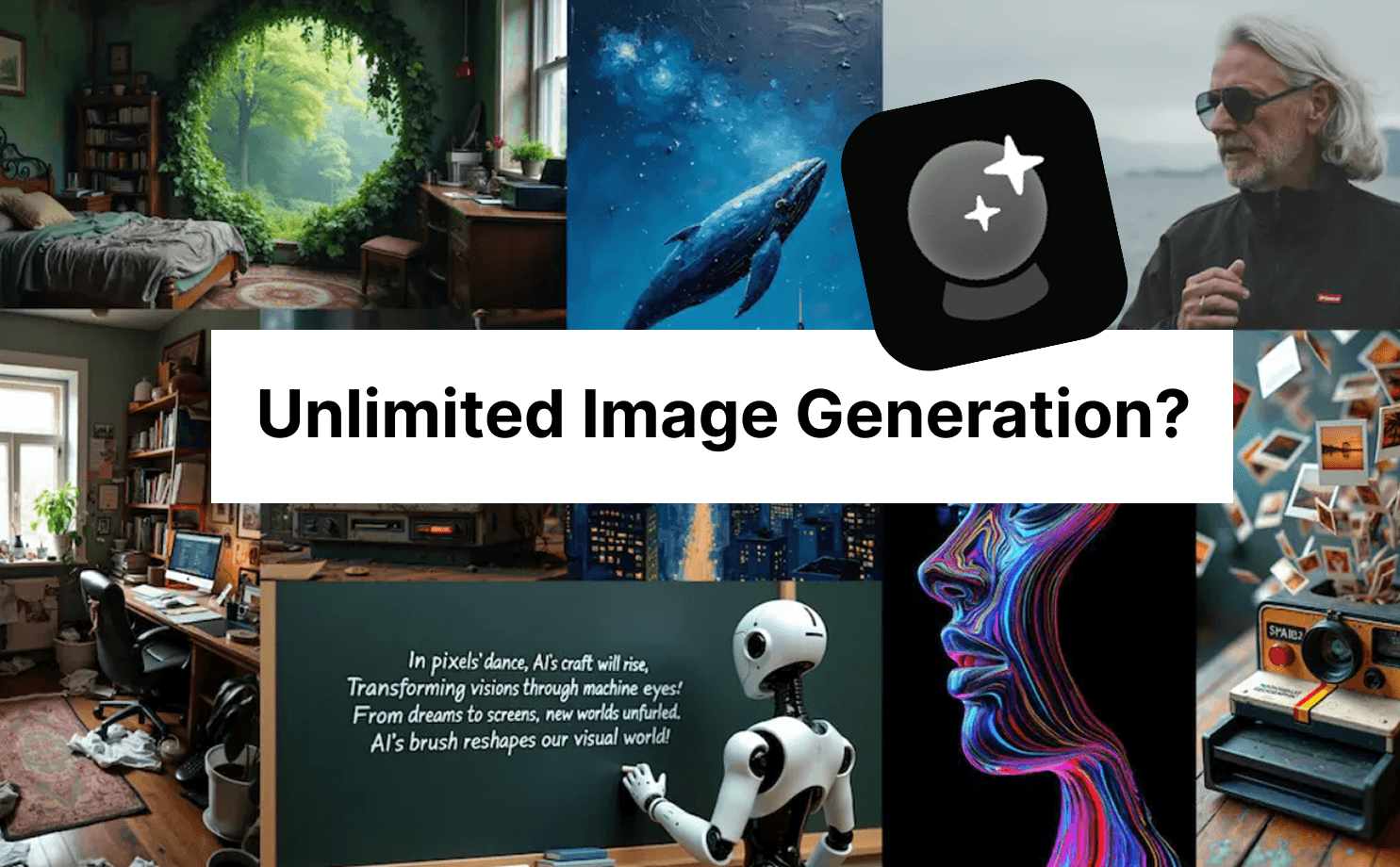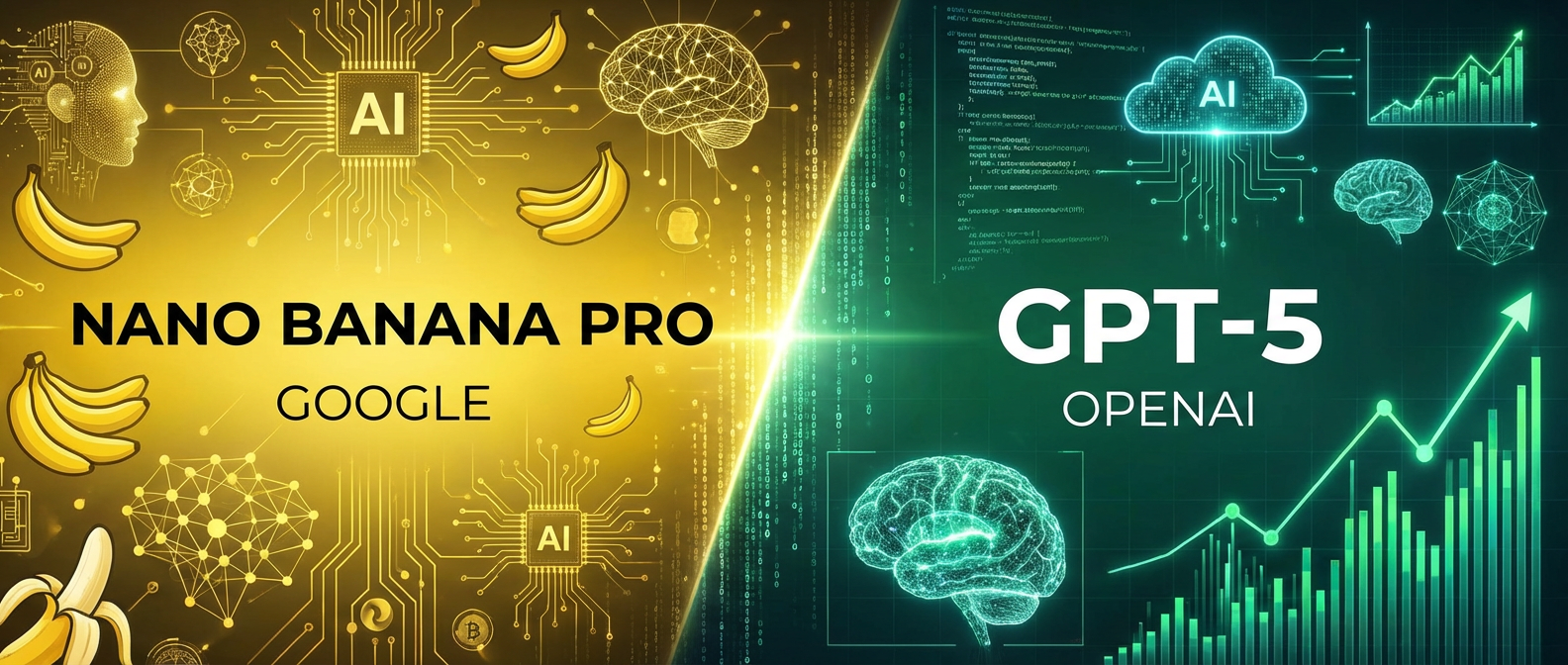If you're here, that means, you've probably tried a few AI image generators. Maybe you've used ChatGPT, dabbled in Midjourney, or even tried with Stable Diffusion. The quality can be amazing. But then you hit the same old wall: credits, caps, "fast hours," or daily quotas.
You’re in the middle of a project, ideas are flowing, and then… you’re cut off. It’s frustrating. If you've ever typed "AI image generator no limits" into a search bar, you know exactly what I'm talking about.
My name is Sergey Vysotsky, and I'm a co-founder of Writingmate. I use these tools every single day. I built Writingmate because I was tired of counting credits when I should be creating. In this guide, I’ll show you a simple and affordable way to generate AI images without those arbitrary limits. I’ll also break down what the other platforms actually offer, so you can see the difference for yourself.
By the end, you'll have a setup that lets you experiment freely, perform faster, and produce better visuals all for about the same price as ChatGPT Plus.

The problem: amazing tools, frustrating caps
Let's be real: the tools out there are incredible. Midjourney creates stunning art. Stable Diffusion is wildly flexible. Google's ImageFX is surprisingly powerful and free. But every single one comes with a catch.
But they all have a shortcoming:
ChatGPT Plus cost $20 a month, but they'll slow you down if you make "too many" images.
Midjourney has “Relax Mode,” which can be unlimited, but its faster “Fast Mode” is strictly metered.
Google ImageFX is free but doesn’t promise anything. It’s a preview product, and access can be spotty.
Adobe Firefly make uses of generative credits that renew monthly based on your subscription plan.
Stability AI/Clipdrop and the Stability API are credit-based (e.g., SD3, SD3.5 families).
Recraft make uses of monthly credits on its paid plan.
Ideogram has paid plans with monthly credits that change into image counts.
Leonardo AI is simplified, conversational explanations for all users and API plans.
FLUX models (e.g., FLUX 1.1 [pro]) are available through clouds like Azure with one thousand cost for image pricing.
And a quick note since people always ask: Claude is a genius with text and code, but it does not generate images. Grok, on the other hand, does.
So, the quality is there. The innovation is there. But the freedom to just create? Not so much. If your work requires volume, like testing 50 ad concepts or storyboarding a whole video, these caps aren’t just annoying; they’re a roadblock, I mean an obstacle.

The solution: how Writingmate gives you AI images without limit
This is the simple setup I use myself.
Think of Writingmate as your all-in-one AI workspace. For the same $20 a month as ChatGPT Plus, you get access to over 200 AI models. The magic is in how we connect things. We treat image generators like "Tools" that any capable text model can use.
This is how it works:
You can use a simple, unlimited text model to drive all of them at once.
Our image engines (currently ChatGPT's model, Stable Diffusion 3, FLUX pro, and Recraft V3) do not have daily caps.
So, you can pick a cheap, unlimited text model (like GPT-4o mini) and connect it to all four image engines. Then, you can generate as many images as you need without watching a counter tick down.
In practice, that means:
Write one prompt.
Send it to all four generators at once.
Compare the results side-by-side.
Tweak and try again without worrying about wasting a “precious credit.”
Why ‘Unlimited’ Changes Everything
When you’re brainstorming, A/B testing ads, or building a brand style, you need volume. You can’t find the perfect image by looking at three options; you need to see thirty. Limits force you to settle too soon.
Having everything in one place changes that:
Your conversation and context stay in one thread.
You can easily create variations from any result.
You can compare different engines on the same prompt. Want a vector logo from Recraft, a photorealistic version from FLUX, and a stylized take from OpenAI? You can do that simultaneously.
Your team stays consistent, using the same tools and models in a shared space.
Check out our article on Flux image generator: Flux.1 AI: A Comprehensive Guide to Using New AI Image Generator

Your 5-Minute Setup for Unlimited Images
Start a new chat and pick a text model that supports “Tools.” I usually grab GPT-4o mini, it’s fast, cheap, and unlimited
Attach the image Tools. Flip the switches for ChatGPT Image, Stable Diffusion 3, FLUX pro, and Recraft V3.
Write your prompt. For example: "A cozy, Scandinavian living room, 35 mm film feel, soft window light, natural woods, lots of plants. Show two angles: one tall (9:16) and one square (1:1)."
Compare the results. See which engine nailed it. You can even ask the text model to critique the images and suggest improvements.
Iterate freely. Change the lighting, adjust the aspect ratio, or add a dog to the scene. Go for it. There's no meter to watch.
Organize and share. Save your best results and share them directly with your team.

A Real-World Look at AI Image Tools in 2025
This is a straightforward breakdown of the popular image generators, what they cost, and their biggest limitation. Just a heads-up, this is a simplified snapshot as of early October 2025, always double-check the official sites, as things change fast.
Tool | Typical price | Model(s) | Limits / notes |
ChatGPT (Plus) | $20/month | Its own built-in model | They'll slow you down if you make too many images too fast.(ChatGPT) |
Midjourney | $10–$12 0/month | Midjourney models | "Relaxed" mode is slower but unlimited; "Fast" mode burns through your paid hours quickly. (docs.midjourney.com) |
Adobe Firefly (in Creative Cloud) | varies by plan | Firefly Image | You get a monthly allowance of credits. When they’re gone, you wait. |
ImageFX (Labs) | Free | Imagen 3/4 | No clear limit is stated, but you need a Google account and it's not available everywhere. |
Recraft | from paid credits | Recraft V3 | Works on a credit system. You need a paid plan for commercial use. |
Ideogram | $8 / $20 / $60 | Ideogram 2a | Your monthly plan gives you a set number of images. |
Playground AI | Free / $15 / $45 | Stable Diffusion and others | You have a cap on how many you can make per day (anywhere from 50 to 1,000+). |
Stability (Clipdrop/API) | Free tier / Paid plans | Stable Diffusion 3 & 3.5 | Runs on a credit system. Even pro plans have daily usage limits. |
FLUX (Azure, etc.) | Around $40 per 1,000 images | FLUX 1.1 Pro & other pro models | You pay per image with no monthly subscription, so costs can add up fast. |
How We Do It (Without Breaking the Bank)
We don’t do magic, we just create this smartly:
We separate the tasks. Your chat model can be inexpensive, while the powerful image models are just on tap, used only when you need them.
We use smart routing. You can let the system choose the best engine, or you can run them all. It’s your call.
We have fair-use rules. We stop bots and spam, not people doing genuine creative work. The goal is to help you create more, not to make you count tokens.

Fast comparisons you can run today (prompts you can copy)
For a real estate listing: Try this: “Modern kitchen, lots of natural light, a 24mm camera look. Show two different angles in a tall 9:16 format. Use light wood and black accents.”
My tip: Use Recraft to get clean, graphic-style images perfect for a flyer. Then, run the same prompt through FLUX pro and Stable Diffusion to see which gives you a more realistic, photo-like kitchen. Toss it to the OpenAI model for a more artistic, moody shot.
For an online store product photo: Use: “A single product on a pure white background, with a soft shadow. Make it look like a 35mm photo. Give me four slightly different versions, each with unique reflections.”
My tip: Compare SD3 and FLUX pro side-by-side. SD3 is often grittier and more real, while FLUX is brilliant at understanding the tiny details in your prompt. The OpenAI model is your wildcard here for a more "lifestyle" feel.
For a YouTube thumbnail: Prompt: “A friendly host, with a soft light outlining them. Leave a bold, clear area for a title, and use my brand colors. Show me three of their different expressions.”
My tip: Start with Recraft, it’s amazing for creating balanced, easy-to-read layouts. If you need the host's face to look consistent across all three expressions, FLUX pro is your best bet. And if you want to get creative with the style, let the OpenAI model have a go.

Where other platforms stand (and why we integrate them)
A quick state-of-the-market snapshot:
ChatGPT has a really smooth image generator built right into the chat. It’s simple to use, but you’re still paying $20 a month, and they can throttle you if you make too many images. We included it so you can pit it directly against the others and see which one you actually prefer.
Midjourney is the king of beautiful, artistic images. Their “Relax Mode” is okay for slow projects, but if you’re in a hurry, watching your “Fast Hours” drain away is seriously stressful.
Google ImageFX is surprisingly powerful, and you can’t beat the price, it’s free (for now). We’re keeping a close eye on it and are working on bringing that same kind of style into our own tool.
Adobe firefly makes the most sense if you’re already paying for Creative Cloud. The credit system is straightforward, but let’s be honest, it’s still a limit. You’re always aware you’re spending a token.
Stability / SD3 is the champion for folks who want total control and open-source freedom. The catch is that almost every website that hosts it for you ends up putting it behind a paywall or a credit system
Oh, and a quick heads-up since people get confused: Claude still doesn't make images. If you're looking for that on X (formerly Twitter), you want to check out Grok, they've got an image generator called "Aurora
When “no limit” changes your week
For the creators and marketers: Imagine not just testing three ideas for a campaign, but thirty. You can flip through entire visual themes in an afternoon. You could even present your client with a whole book of options from different AIs and let them choose their favorite.
For the product teams: You can be sketching out UI mockups and icons right in the same document where you're writing the technical specs. And when you see a design you like, you don't have to stop. You can instantly create a dozen variations across all the engines until you find the one that feels just right.
For the sellers and indie hackers: You can sit down and generate a hundred different thumbnails for your YouTube video or a whole set of banner ads for your product launch. Just generate them all, pick the absolute best, and delete the rest. No more mental calculations about how much each image is costing you.
For educators and nonprofits: You can build a whole library of engaging graphics for your students or create all the imagery for a fundraising campaign, without once having to stop and wonder, "Do I have enough credits left for this?"

Best-practice tips to scale without caps
Create a master prompt. Save a note with all your key details, your brand colors, favorite aspect ratios, and general style, so you can just copy and paste it every time you start a new project. It’ll save you tons of typing.
Test your favorites everywhere. Found a style you like? Don't just stick with one engine. Immediately run that same prompt through all the other image tools to see which one gives you the best version.
Talk like a photographer. The AIs understand camera terms really well. Instead of "make it bright," try asking for a "wide-angle lens" or "shot at golden hour with a low full stop." You'll be amazed at the difference.
Get a second opinion. Use the chat AI itself! Show it the images it just helped create and ask, "What are three small things I could change to make this better?" It can give you surprisingly good feedback.
Build a team library. When you land on a prompt that works perfectly, save it! Better yet, share it with your team so everyone can create visuals that look consistent and on-brand.
Frequently Asked Questions
Written by
Artem Vysotsky
Ex-Staff Engineer at Meta. Building the technical foundation to make AI accessible to everyone.
Reviewed by
Sergey Vysotsky
Ex-Chief Editor / PM at Mosaic. Passionate about making AI accessible and affordable for everyone.



